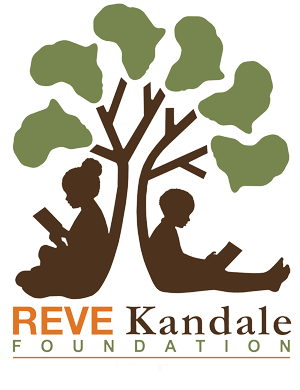The previous Communiqué documented the arrival of two trucks filled with supplies to begin work on the roof of the first block of classes and to initiate construction of the foundation of the second block. Several weeks ago Colette left in a ‘convoy’ bringing two Land Rovers packed with supplies for a six-week stay in Kandale. Amongst the passengers were Colette and Frederick, along with James who would be inspecting the water pump station and assessing the feasibility of a drip irrigation system to improve the growing of crops during the intense dry season. The list of goals was long, least of which was the construction. ABCD training was in full swing, targeting lessons on agronomy for the first group of 50 local participants. In addition, Colette would be rallying the communities in support of the first girls’ regional soccer match. All of this would be in coordination with the day-to-day business of REVE Kandale and the important communications between the various local community representatives as well as discussing the status of local contribution (gravels, rocks, sand, labor, etc.) for the new construction of Institute Gufwa Gubila HS.
The rainy season continued to take its toll on the roads and the conditions were no kinder to Colette than they were to the trucks that journeyed to Kandale earlier. According to Colette the roads were more treacherous and frightening than previous years, but with the help of a new truck company, they were able to make it from Kikwit in one day. As is the custom, the community burst out in celebration upon their arrival.
Colette was thrilled by the success of the ABCD training on agronomy. People were genuinely excited by all the new information that had been presented. The new trainer, Justin Mundele, was excellent and he made full use of the participants’ skills and experience in agronomy. He began his training from the ground up as it were, point by point. How was the ground tilled, how was the soil rejuvenated, how were the seeds planted, and in what rotation? How was the soil assessed for nutrient level, and how were the plants taken care of? Were people aware that different crops required different soils, moisture levels, and nutrients? There was a discussion of diseases and pests and the importance of worms in the soil, they are the gold that breaks down the nutrients and feeds the plants. The 50 attendees were provided with a very thorough syllabus containing pictures and descriptions of various crops and how to care for them, including a calendar on when to plant each crop. Justin Mundele arrived with a great deal of experience, having worked with a variety of European funded projects throughout Congo. The final installment of ABCD will be in June. It will focus on small business training in addition to making soap, building an oven for making bread, and another session of agronomy for those who were unable to attend the first session.
Shortly after arriving, a referee from the national team arrived. He spent many hours training referees from the surrounding villages and setting up a schedule. Due to the excitement of the tournament, there are now 32 teams with over 700 girls who will be participating. With such large numbers, it will be a tournament with two matches a day of direct eliminations with the winners moving forward. As part of the organization, all the chiefs from the participating villages have been asked to visit Kandale to support the team and the tournament. Each village arrived with a delegation of three from which eight referees will be chosen. Colette met with all the delegations for a long afternoon to explain the process. It goes without saying that the event included a lot of singing and dancing as these individuals seldom have the opportunity to see one another. The joy and enthusiasm was overwhelming.
Work on the first classroom block began immediately, with the construction team organizing the materials to prepare the roof for the wooden supports. Within a week the framing had been completed and was ready for the tin roofing. It has been a dance with the weather, but there were many productive days and often the crew worked in the rain. It is important to note that all the work is done with hand tools and there is no concern about getting electrocuted or ruining the tools.
Recently several fuses in the water pump had blown out due to a serious storm. These fuses were designed to blow out for just this reason. The pump was shut down temporarily to protect the system. After removing the fuses, James was able to start the pump up once again. He trained Merveille and Eudes about how to operate the system manually in order to avoid the problem from recurring. The long lines have returned to both the pump house and the grinding station.
Soon the dilapidated structure adjacent to the first block will be dismantled and the clay in the walls will be used to build more bricks. While there won’t be any windows or doors for a while, the new structure will be infinitely better than the crumbling classes they had previously been using. Colette has several more weeks of organizing before she returns. So much has already been accomplished and the positive progress is contagious throughout the community.





